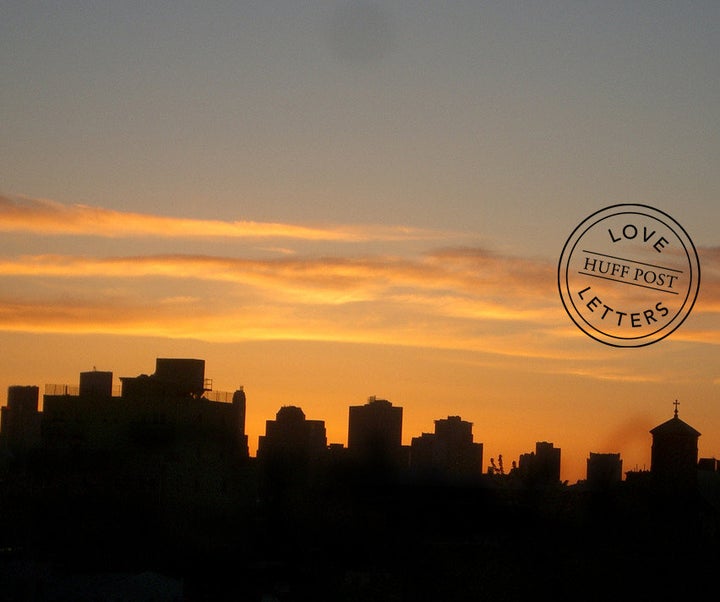
Over the years, I've heard a lot of disparaging remarks about Downtown Brooklyn's Fulton Mall. Comments made by the author of a recent piece about the Alamo Drafthouse Theater coming to City Point, a new development on the mall, are just the latest. The author apparently lives in L.A. but was a Brooklyn resident for a decade. "I saw Downtown Brooklyn when it was pretty crummy," he says. The next bit is worth quoting in full:
"The Fulton Mall, obviously a prime piece of real estate once upon a time, was reduced to nothing but beeper stores and weave shops. There were, no kidding, like half a dozen beeper stores in this one stretch. It was a pity, because the area is so convenient, the local neighborhoods so lovely and the history of Downtown Brooklyn so strong."
The first thing I would like to ask the author is, a pity for whom?
I am not picking on this particular journalist, mind you. Just using him as an example of the ways in which certain people commonly talk about Fulton Mall, and black, working-class urban spaces like it.
I'll admit that in 2001, when I moved to Brooklyn from Manhattan, I'd pass the edge of Fulton Mall and wonder when the city was going to make it "nicer." Having just moved into a rapidly gentrifying Park Slope, I assumed that at some point the mall, which seemed out of sync with Brooklyn's ever-increasing hipness, would be forced to follow suit.
I was even more right than I knew at the time. In 2004, the city of New York rezoned Downtown Brooklyn, opening the floodgates of speculation and investment -- in a word, gentrification.
A planning student at the time, I took a job interviewing people at Fulton Mall for a study led by the Pratt Center for Community Development. The Center was concerned about the impact the city's plans might have on the mall's largely working-class community of shoppers and business owners. This work led to a documentary film, My Brooklyn, with Kelly Anderson, that attempts to expose the often-invisible actors and arcane policy decisions driving gentrification.
One big takeaway from all this work, which involved hundreds of interviews and countless hours of observation and research, was that lots of people loved the Fulton Mall before gentrification set in. Even when people said they wanted improvements, such as different stores or services, it was in an overall context of valuing it, in economic as well as social and cultural terms. These positive sentiments, held largely by the black and Caribbean working-class communities who patronized the mall, stood in stark opposition to the unselfconsciously hostile way that relative newcomers -- who tended not to set foot there -- talked about it. The latter, some of whom appear in our film, described Fulton Mall as "gross," "scuzzy," dirty," "crappy," and one gentleman even likened it to a "turd."
Did every black person we talked to love Fulton Mall? No. But they didn't seem to feel a need to trash it the way the white people we spoke with did, either. To be sure, perceptions of the mall were divided along class as well as racial lines. But even the black gentrifiers we spoke with who admitted they didn't like the mall stopped short of going out of their way to put it down.
Statements about how bad a neighborhood is, I've observed, frequently arise in otherwise polite conversation among more or less liberal, privileged white people. As harmless as these comments might seem, though, it's important to unpack the assumptions behind them -- in part because it's the consumer culture of this very class of folks to which so much city policy of late caters. This has accelerated a process of gentrification in spaces like Fulton Mall, forcing out small-scale shops, workers, the poor, and even the middle class. In short, it has led to the near-erasure of New York's celebrated social diversity.
I'd like to let the author of the Alamo Drafthouse piece know that Fulton Mall was a thriving, successful district before the Bloomberg administration rezoned it: 100,000 people frequented it daily, and it was the third most profitable shopping district in the city. It was also a popular cultural and social hub for black people of different ethnicities, spawning hip-hop artists and art forms that are now world famous. Yes, there were "weave shops" and "beeper stores," and there was a lot more, too (see My Brooklyn for details). And anyway, it's not as though putting in a Starbucks and a Panera Bread are exactly solving the alleged "retail diversity" problem the city has been freaking out about. Those corporate stores are the ultimate symbols of the kind of retail redundancy that has gradually been wiping out neighborhood character for a long time now.
Accusations of racism aside, people who use terms like "scuzzy" and "crummy" to describe what Fulton Mall was are missing the point. In reality, as My Brooklyn depicts, Downtown Brooklyn fell on hard times due to decades of racist land use policies, and severe urban disinvestment in the 1960s, '70s, and '80s. That the mall actually survived this period when many other historic black shopping districts died is a testament to the creativity and perseverance of the people who moved in to do business there after white people abandoned it. Now that the city is interested in re-investing there, Fulton Mall's longtime shops have mostly been kicked out. Sensitivity to this history and a more nuanced understanding of the aesthetics it produced might explain why we never heard black people impugn the mall the way white people did.
When we use words like "scuzzy" in an unqualified way to describe places like Fulton Mall, it's as if we believe our reality is the only one that exists, and we should be embarrassed. The idea that others might see things differently because of racism and oppression, and actually value places such as Fulton Mall, needs to enter into the conversation. In discussions about neighborhood change, we need to remove our blinders and start asking questions like, "scuzzy for whom?" And, when claims are made about a neighborhood getting better, "better for whom?" Not only does this help us confront uncomfortable issues of race and class, it also leads to a different vision of urban planning.
The fact is that the people at Fulton Mall wanted improvements to the area, but they also wanted the things they valued recognized and protected. If the city had genuinely included them in the planning process and not viewed them as an obstacle, the new Alamo Drafthouse theater might be coming into a Fulton Mall that also includes space for displaced small businesses, more commitment to living wage jobs and local hiring, and more affordable housing. In their redevelopment efforts, the city might have done more to preserve the mall's creative hip-hop aesthetic, lively street life, and eclectic black culture. Old and new could have been integrated, and some healing might have taken place.
The fight isn't over, to be sure. There is still a lot of diversity left in Brooklyn, and a lot of hope. But we have a lot of work to do, beginning with ourselves.
"My Brooklyn" will be screening January 4-10 at ReRun Theater in DUMBO, Brooklyn. Tickets are now on sale at www.mybrooklyn.eventbrite.com.
